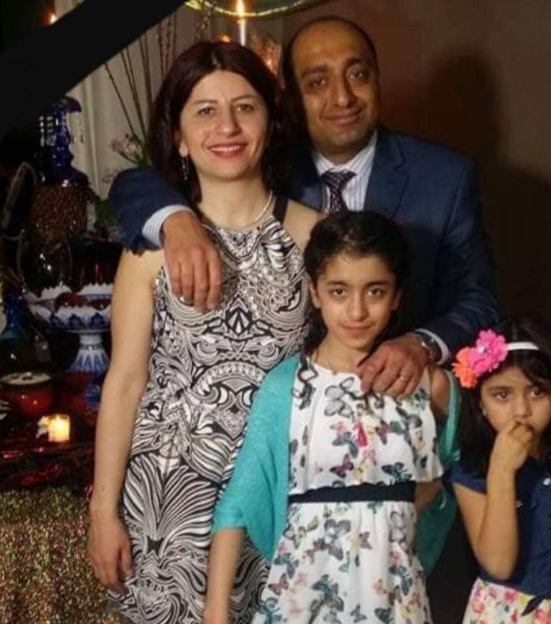Professors, students and researchers at the University of Alberta are working to complete projects left behind when 10 people with links to the school were killed aboard Ukraine International Airlines flight PS 752.

When Iranian missiles shot down the passenger jet on Jan. 8, 176 people were killed.
More than six weeks later, life has had to move on at the University of Alberta. In the Mechanical Engineering Building, Nasim Rahmanifar’s desk sits untouched.
A postcard above her tidy desk reads: “your future looks so bright, you have to wear shades.” But that bright future was never fully realized.
Rahmanifar was on the plane that day. The masters student was returning to Edmonton after a trip to Iran to surprise her family.

She had been working on a smart watch app for wheelchair users. It would monitor their movements and alert them when they needed to modify their strokes in order to avoid shoulder injuries.
The research was being funded by Alberta Health Services and the Glenrose Rehabilitation Hospital.
“The philosophy is that we want to develop some engineering technologies, innovative technologies, that would directly impact quality of life of people who are in need of such technologies,” explained Assistant Professor Hossein Rouhani.
- Life in the forest: How Stanley Park’s longest resident survived a changing landscape
- ‘They knew’: Victims of sexual abuse by Ontario youth leader sue Anglican Church
- Carbon rebate labelling in bank deposits fuelling confusion, minister says
- Buzz kill? Gen Z less interested in coffee than older Canadians, survey shows
While the work stalled following Rahmanifar’s death, Rouhani resolved to make sure it was finished. The task is difficult though. Her immense knowledge was lost but so too were little things like where she kept a computer necessary for the project.
Recently Rouhani began the impossible task of filling Rahmanifar’s position.
“I had outstanding candidates. But every time, subconsciously, you compare these great candidates with Nasim,” He explained. “And then you see that, despite being excellent, you cannot compare them with Nasim.”
A similar struggle is happening at a neighbouring building on the University of Alberta campus.
In the research lab where Mojgan Daneshmand spent much of her time, there’s now a table dedicated to the professor with candles and photos of her and her students.

Daneshmand was also on the plane, along with her husband Professor Pedram Mousavi, and their daughters Dorina and Daria.
Even though she was working as a professor, she was juggling multiple research projects. Mainly, she was developing high-tech sensors.
One sensor could detect tiny levels of glucose in blood as a way to help diabetes patients. Another could wrap around pipelines to detect leaves via drone without having to dig down and inspect the infrastructure.
“We are hopeful that all of those projects would end up almost the same or even better than what Mojgan was expecting,” said research assistant Mohammad Abdolrazzaghi.
Abdolrazzaghi told Global News his colleagues were working harder and collaborating more in an effort to make that happen.
Student Sameri Deif agreed, saying life-changing, world-class research was lost when Daneshmand died.
“Mojgan is with us. Her smiles, her words, her wisdom. Her eagerness to innovate and serve the community is living with us and will live with us as long as we live.”
While the work is important, Deif said the contribution to her students’ personal lives stood out even more.
Many of the students came from Iran or other countries. Deif and his wife moved from Egypt to study at the U of A. They found a “big sister” in Daneshmand.
“One day I talked about how my wife is struggling here as a newcomer staying home and she said, ‘Invite her, let’s talk,'” Deif told Global News. “I was really surprised how she can take her students as a package. You, your research, your family, everything. She took care of everything in your life.”
It’s one of the reasons he feels passionate about finishing the work she started.
Much of the research is also subject to grant funding and looming deadlines require the projects be completed.
With photos of the victims posted on cubicle walls throughout the Engineering Faculty, there is a clear desire to make sure that happens.
The university also wants to see new projects developed in honour of those who died.
A memorial fund was started soon after the crash and, with the donations, the school will create two scholarships for graduate students in hopes of keeping the incredible legacies alive.




Comments